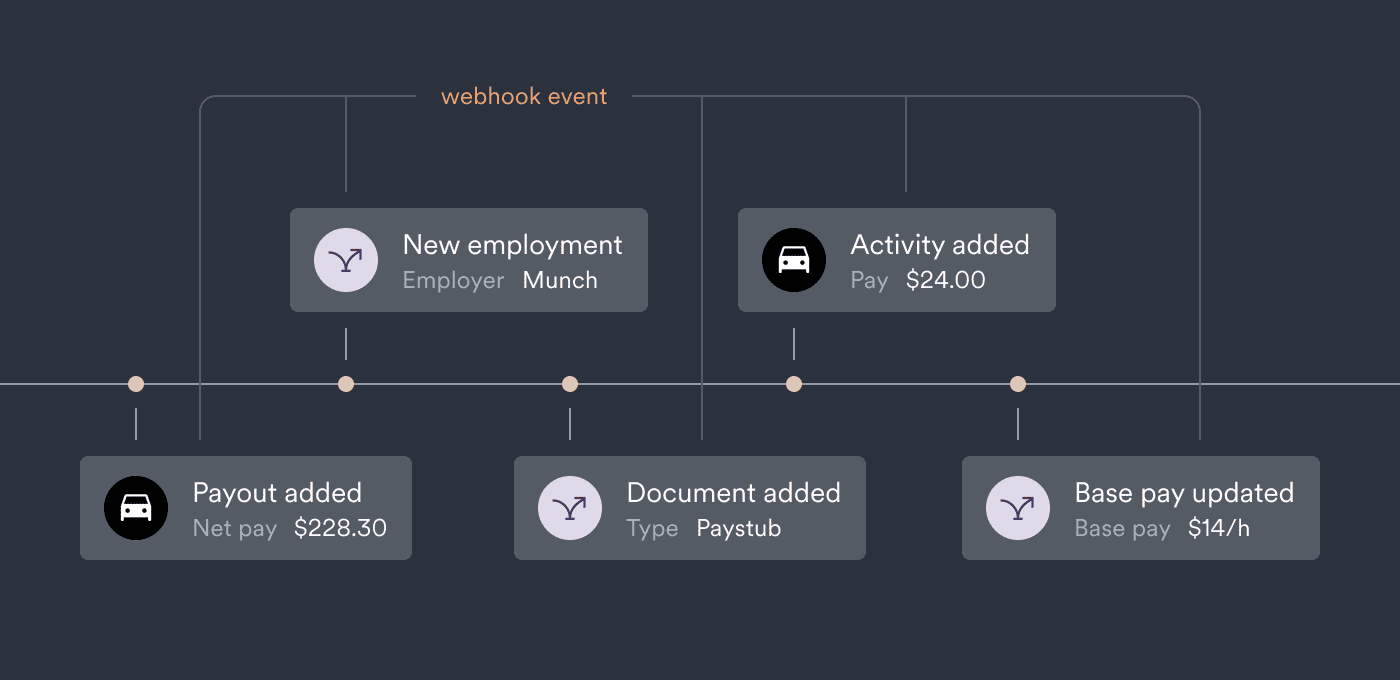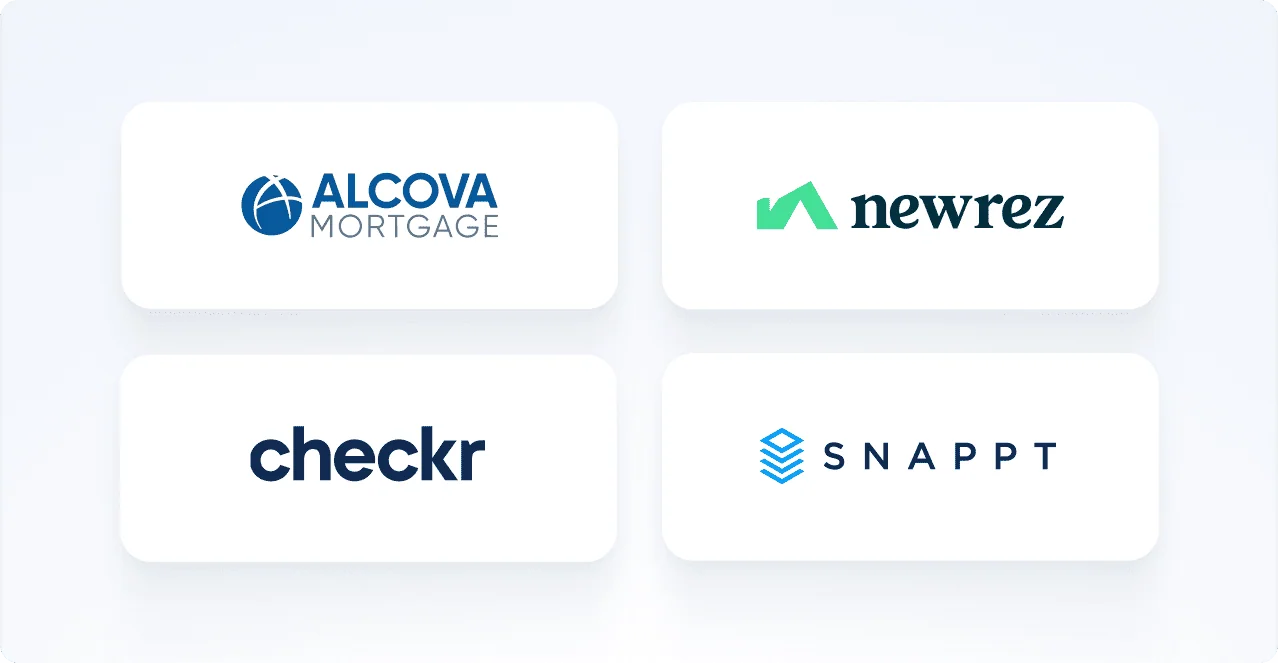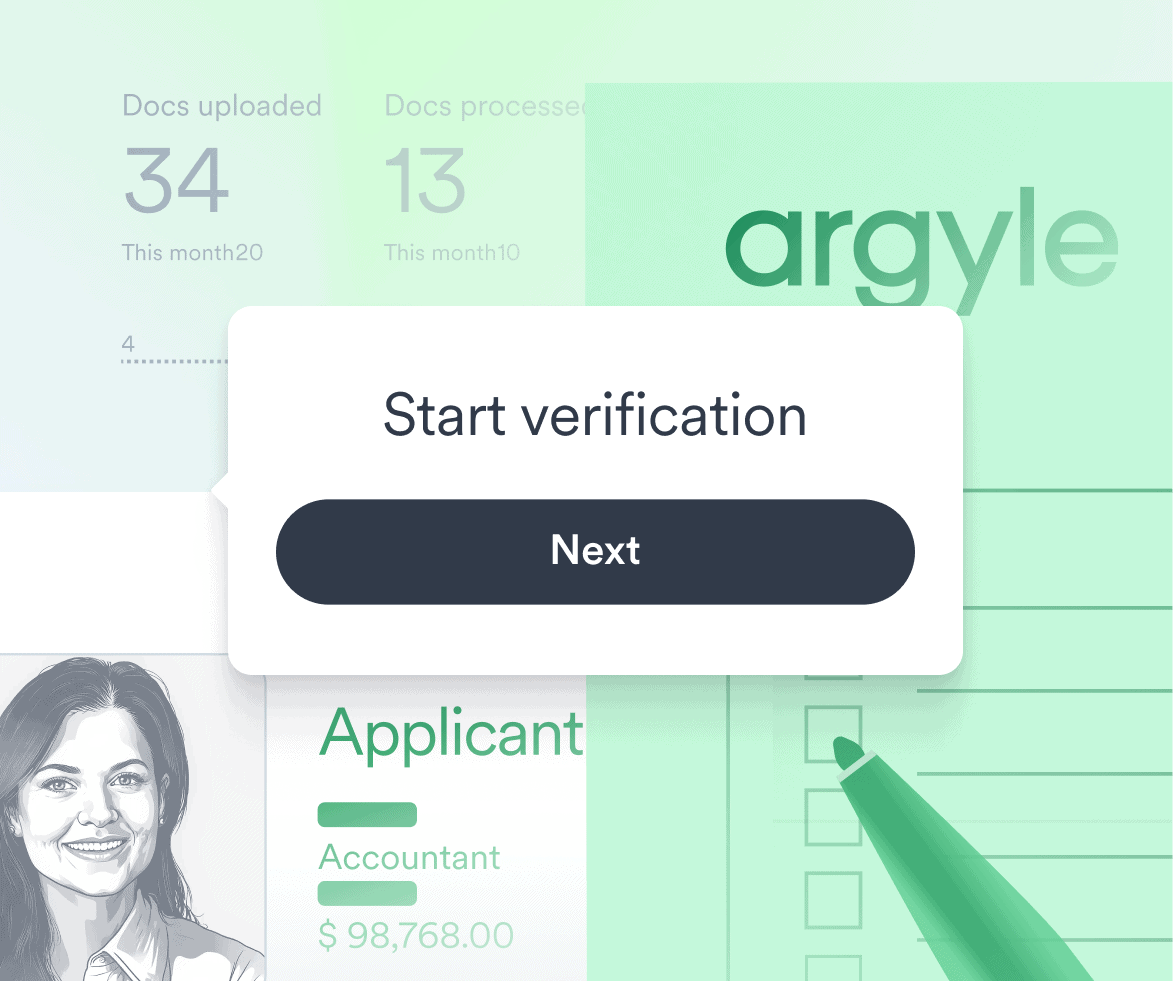Subscribe to real-time notifications of data events and changes, so you can make even better business decisions.
With Argyle, not only do you get ongoing access to the most trusted network for income and employment data, you can also leverage our sophisticated webhook technology.
Webhooks are a gamechanger for any company that relies on income and employment data to shape their business, and Argyle offers—by far—the most robust, customizable solution.
Let’s explore some of the ways our webhooks lead to higher quality data and even better business decisions for you.
What are webhooks?
Webhooks are our way of automatically communicating with your system about your customers. They notify you in real time of any additions or changes to your customers’ income and employment data.
For example, if one of your customers gets laid off from their job, their employer will update the payroll system, and you’ll get an immediate notification and see the change reflected on the customer’s profile.

Other data events that could trigger a webhook notification include:
One of your customers makes a new payroll connection or attempts to
Argyle has successfully retrieved all data from a recently connected customer account
One of your customers experiences a significant change in income or hours worked
You can find a full list of available webhooks in our documentation here. Use the sidebar navigation to find the webhooks that interest you.
Are webhooks customizable?
Yes. Argyle webhooks are totally customizable.
That means, you can use webhooks to receive notifications and pull the exact data points you need—and only the data points you need—on your own terms and according to your own schedule. That isn’t just convenient; it means you won’t waste time sorting through needless loads of data just to get to the relevant information. (This is also a best practice for security reasons.)
Your business may be interested in fluctuating paycheck amounts, or you may be more concerned with customers taking on new gig work. With webhooks, you can customize events and get notified about what matters most to you.
How are webhooks used and what are the benefits?
You can use webhook notifications in a variety of ways, and they open up numerous opportunities and benefits. Let’s take a look at some of the more common ways Argyle customers take advantage of webhooks:
Keeping an eye on portfolio health
Webhooks can send you a notification whenever one of your customers’ income drops or stops altogether, giving you greater insights into customer risk and helping you to avoid loan defaults.
Keeping a constant, comprehensive watch over your portfolio health will help you to make better lending decisions and more accurately predict outcomes moving forward.
Superior customer service and identifying selling opportunities
With webhooks, you can get to know your customers better and assess how they’re doing financially. All of this should inform how you service them and sell them on different products.
For example, if your customer has been meeting all of their personal loan payments, and a webhook informs you that they just received a pay raise, you might want to inquire if they’re interested in an auto loan as well.
Streamlining communications
Webhooks remove friction from the customer communication process, making everyone’s lives a bit easier and saving a lot of time.
If, for example, you’re a mortgage lender, webhooks can let you know whenever a borrower has a new paystub available for automatic retrieval.
If you’re a personal lender with repeat customers, webhooks make it so that they won’t have to keep uploading paystubs and employment documentation every time they want to apply for a new line of credit.
In both cases, webhooks cut out paperwork and back-and-forth, and ensure that you already have everything you need in place.
What makes Argyle’s webhooks special?

Our webhooks let you get granular and customize your notifications via smart controls that only trigger an alert if specific conditions are met.
This is a much more efficient and cost-effective way of monitoring customer data. Rather than having to comb through the wealth of data Argyle is capable of providing to find the one point you’re looking for—and not really knowing if there’s even been a significant change—you can sit back and let our webhooks do the work for you.
Get started with Argyle webhooks
You can subscribe to webhooks in one of two ways: via Argyle Console or our API. These links offer step-by-step guides on how to subscribe, customize, and organize our webhooks and keep your data in sync. If you’re not sure which approach is right for you, reach out to our support team.






